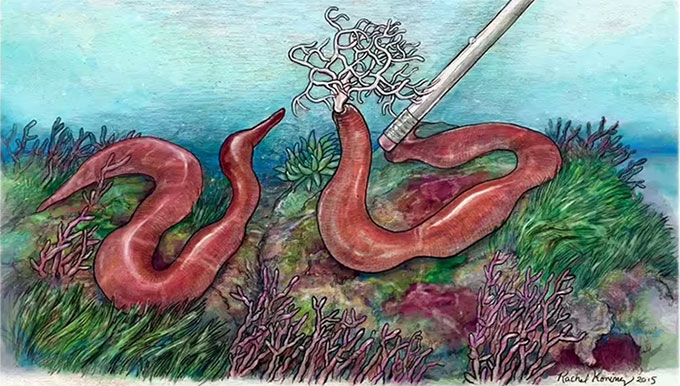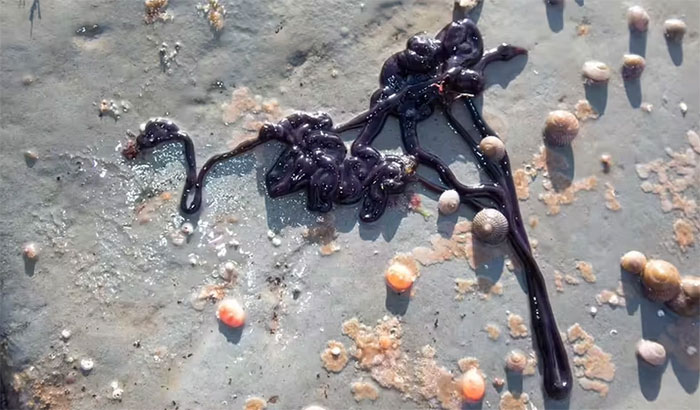The bootlace worm is one of the longest animals on Earth. At times, they have been found on beaches measuring up to 55 meters in length.
Despite being a small, slender creature, not much wider than a pencil, the bootlace worm (Lineus longissimus) boasts an impressive length. They are considered the longest living organism currently known, sometimes rivaling (or even surpassing) the blue whale.

The bootlace worm is one of the longest animals on Earth.
In a 2008 article for the journal Zoologische Mededelingen, biologists Adriaan Gittenberger and Cor Schipper explained that bootlace worms measuring up to 98.4 feet (30 meters) have been “encountered numerous times.”
However, the remains of a giant bootlace worm were reported to have washed ashore in Scotland in 1864. At that time, its length was measured at an astonishing 55 meters.
Nevertheless, some scientists do not confirm the existence of the species Lineus longissimus reaching such lengths. The reason is that this animal can stretch and contract, making its body deformable, thus complicating the assessment of their length.

The “proboscis” structure of the bootlace worm is extended from a pouch inside its body when needed.
Lineus longissimus is the largest member of the phylum Nemertea, commonly referred to as “ribbon worms” or “proboscis worms.” This group includes around 1,200 recorded species. Unlike familiar earthworms, they do not have segmented bodies. Additionally, they lack a heart and backbone, often hiding in mud, sand, and crevices around the North Atlantic.
A notable feature of the Nemertea is the tubular “mouth” structure known as the “proboscis.” Typically, it is concealed within a specialized pouch. However, when needed, the worm will extend the proboscis outside its body.
This proboscis serves the function of manipulating and capturing food, which may include crabs, snails, and detritus on the ocean floor. Sometimes, the proboscis is also used as a digging tool.

The bootlace worm can be found under large rocks along the coast or in cracked crevices, kelp beds, and natural tide pools.
To deter predators or when feeling threatened, this invertebrate secretes a large amount of thick, foul-smelling mucus.
Naturalists believe that the defensive mucus of the bootlace worm contains a variety of peptide toxins. However, when a research group examined these in 2018, they discovered a completely new group of toxins that science has yet to understand.
Laboratory tests showed that exposure to nemertide α-1 interferes with the nervous and muscular functions of the green crab (Carcinus maenas) and the Dubia cockroach (Blaptica dubia). This could lead to the death or permanent paralysis of these organisms. Therefore, nemertide α-1 could be utilized as a highly effective pesticide.


















































